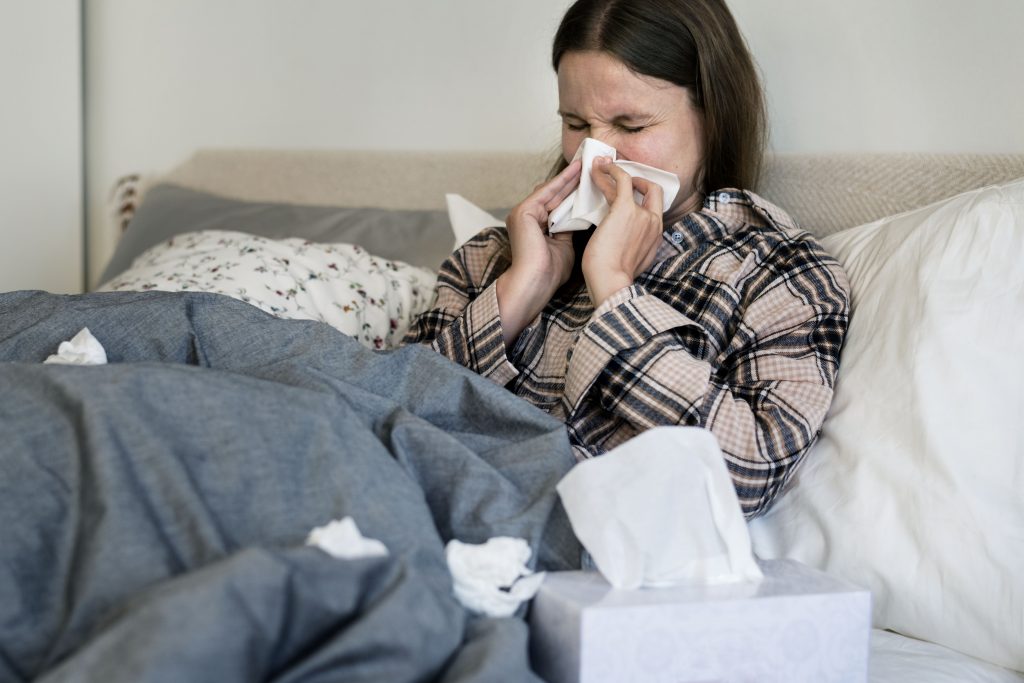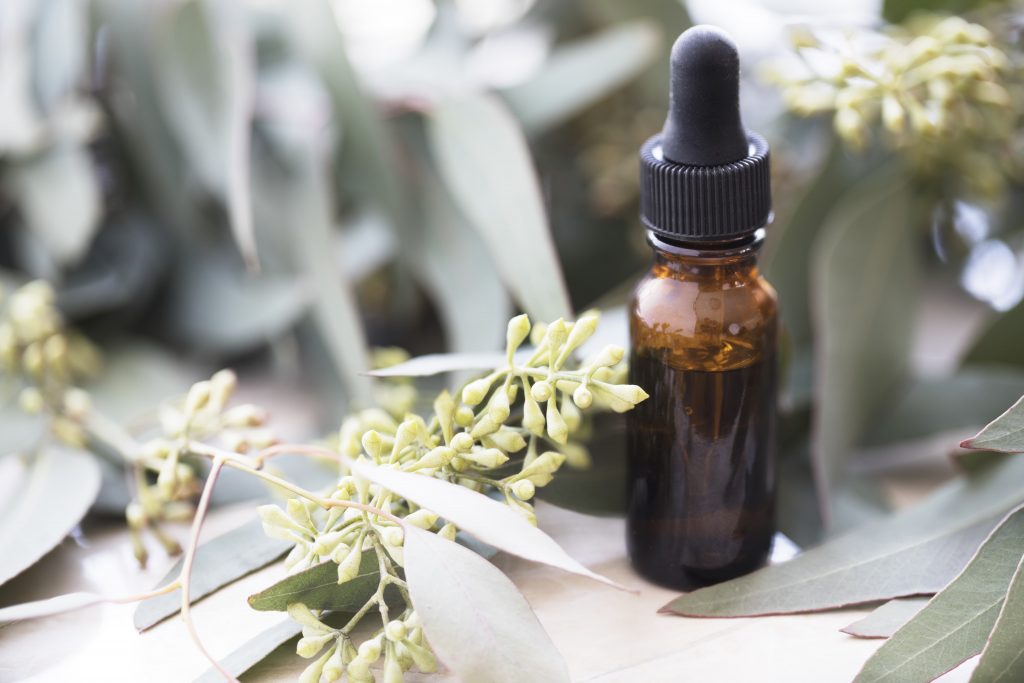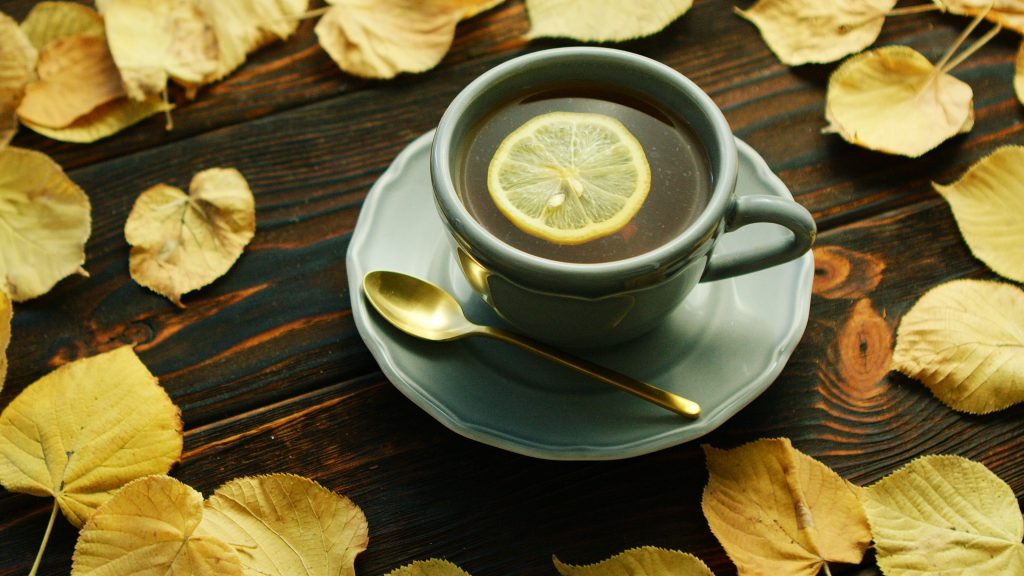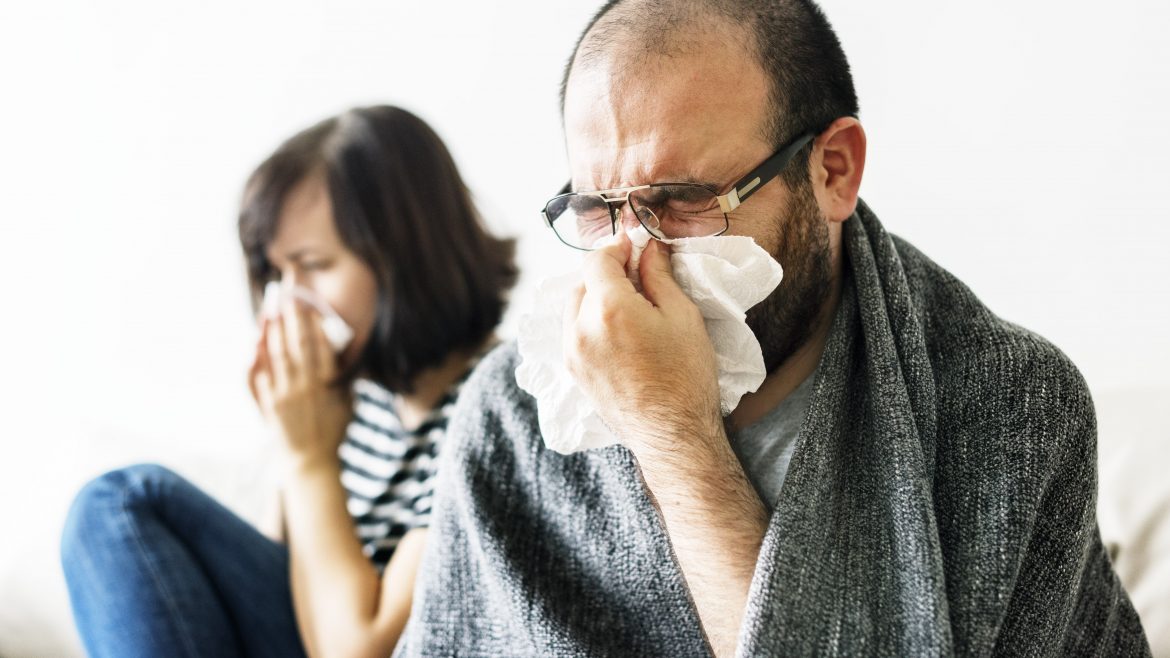Aromatherapy to the Rescue: The Common Cold
We’re all familiar with the common cold.
More specifically, its symptoms: sore eyes, sore throat, headaches, congestion, runny nose, coughing, earache, (sometimes) fever, fatigue, minor body aches, and a general feeling of “yuckyness”, sort of like this.

The common cold is a viral infection of your nose and throat (i.e. upper respiratory tract).
Do Essential Oils Really Work for Colds?
Extensive research has shown the effectiveness of essential oils in dealing with respiratory problems, especially the symptoms that are associated with the common cold.
For example, in Germany an ointment containing essential oils of eucalyptus, pine needles, and menthol was found effective in adolescents with upper respiratory infections[1].
There is also long-standing evidence for the benefits of inhaling certain essential oils to relieve coughs and congestion in the upper respiratory tract using mixtures of Eucalyptus globulus (a certain type of eucalyptus), pine needle and camphor.[2]
Essential Oils and Respiratory Tract Infections
When dealing with respiratory tract infections, certain essential oil properties are particularly useful.
Antimicrobial: the antimicrobial properties of essential oils are well-known[3], and many of them are. These include Cajeput, Cinnamon, Clove bud, Lavender, Lemon, Lemon-scented eucalyptus, Manuka, Niaouli, Pine, Rosemary, Tea Tree, Thyme, etc. These are particularly good for treating the flu, colds, sore throats and others.
Antispasmodics: antispasmodics relax the bronchioles of the lungs and may be used to treat coughing; some antispasmodic essential oils include Angelica root, Aniseed, Basil, Bay Laurel, Virginian Cedarwood, Cajeput, Cypress, Clary Sage, Eucalyptus, Sweet Fennel and Thyme[4].
Antitussives: antitussives are remedies that prevent coughing, either by soothing irritability (demulcents) or removing congestive mucus (expectorants). Essential oils such as Aniseed, Cypress, Eucalyptus, Peppermint and Thyme are good to take in lozenges for cough. They work in part by stimulating the production of saliva, producing more frequent swallowing and therefore suppressing the cough reflex[5].
Demulcents: demulcents soothe and relieve irritated or inflamed mucous membranes; Sandalwood[6] is a good essential oil to use for this purpose.
Expectorants: expectorants help get rid of phlegm. Expectorant essential oils include Aniseed, Angelica root, Everlasting, Sweet Fennel, Ginger, Thyme[7] and more.
Immunostimulants: The immune system needs to be functioning properly during infection, because it’s the body’s defense mechanism against it. Essential oils can support the immune system by inhibiting the development of harmful micro-organisms or by stimulating the immune system; some essential oils including Cajeput, Eucalyptus, Lavender, Lemon, Niaouli, Rosemary, Tea Tree[8] and Thyme provide support on both ends.
Essential Oils for the Common Cold: Vicks Vaporub
Have you ever used Vicks VapoRub before?
It seems like many people have. The majority of people I talk to have memories of their parents giving them Vicks for a cough, cold, or chest infection; I remember my parents would rub some on my chest and/or throat and apply some just under my nose. I would always feel better afterwards.
Research has shown that Vicks really does work[9]; it works because it contains certain aromatic compounds: eucalyptol, camphor, and menthol[10].

- Eucalyptol is another name for 1,8-cineole (i.e. the name of the chemical compound); 1,8-cineole is an ingredient found in many proprietary medicines used for respiratory complaints[11]. It’s an oxide that has antitussive (i.e. cough-preventing), mucolytic (reduces respiratory secretions), analgesic (i.e. pain-relieving), expectorant (i.e. promotes the expulsion of phlegm from the body), antiviral[12], antiseptic (i.e. prevents the growth of disease-causing microorganisms) and bronchodilatory properties[13].
- Camphor is known for its rubefacient quality (among others), increasing blood flow to a site of pain or swelling when applied to the skin[14].
- Menthol has a soothing and cooling effect on the skin[15][16] (when applied topically), on the throat (when taken orally through lozenges or tea, for example) and also serves as a decongestant (when inhaled through diffusion).
If you want to try something ready-made, I suggest this Respiratory Balm. Tell me what you think!
How to Use Essential Oils to Treat the Common Cold
As previously discussed, essential oil components can be absorbed by 4 means[17]:
- Topical: via external skin using massage, compress or bath.
- Inhaled: directly or indirectly with or without steam using diffusers, aromastones, fans, humidifiers, aromasticks, nostril clips etc.
- Internal: via internal skin using mouthwashes, gargles, douches, pessaries or suppositories.
- Oral: using gelatin capsules or diluted in honey, alcohol or dispersant.
When it comes to colds, you’ll most likely be using a mix of these.
Here are some specific ways you can use essential oils for colds[18].
- Treat with antimicrobial essential oils such as Tea Tree, Cajeput, Lemon and Red Thyme.
- Support the immune system by using immunostimulants such as Eucalyptus, Lavender, Lemon and Tea Tree.
- Eliminate excess mucus by using mucolytics and expectorants such as Aniseed, Eucalyptus, Everlasting, Fennel seed, Angelica root and Hyssop.
- Soothe the inflamed mucous membranes by using Sandalwood.
- Use steam inhalation with essential oils; make sure to use very hot steam (it’s a hostile environment for viruses)
- Sleep is necessary to help your body fight off infection. If you’re having trouble sleeping, try some essential oils for sleep and relaxation.
How to Use Essential Oils for a Sore Throat
There are different ways to treat sore throat. Here are some ideas[19]:
- Steam inhalations using essential oils such as Lavender, Tea tree, Cajeput and Ravensara
- Gentle massage to the throat and chest area with a massage oil blend containing Frankincense, Lavender and Sandalwood can be used.
- Add 3 drops of Tea Tree oil to a glass of warm water, mix well and gargle. Repeat 2-3 times a day.
- A drop of essential oil in honey (try Palmarosa in a teaspoon of honey; excellent for a sore throat). Pranarom offers a ready to use honey fortified with essential oils.

If you’re interested in trying something already made for you, consider these following products:
- Aromavita 6 Cold and Cough
- Respiratory Balm provides soothing vapours that help to temporarily relieve mild nasal congestion and cough associated with the common cold.
- Aromavita 8 Resistance
- Aromavita 93 Immunity +
- Aromavita 1 Infection
- Natural Defences Honey an emollient to help relieve the discomfort and dysphagia (difficulty swallowing) due to dryness and irritation of the throat. Helps relieve sore throat and cough.
- Winter Syrup helps relieve sore throat and other mouth and throat infections. Soothes the throat and provides a beneficial and refreshing effect allowing you to breathe more freely.
- Eucaly’Plus Diffusion Synergy
- Imm’Plus Diffusion Synergy
- Winter Balm
[1]See (Buckle, Jane. Clinical Aromatherapy. 3rd ed., Churchill Livingstone, 2003.) P. 147 for cited studies
[2] See (Lis-Balchin, Maria. Aromatherapy Science: A Guide for Healthcare Professionals. Pharmaceutical Press, 2006), p. 4 for cited studies.
[3]See (Battaglia, Salvatore. The Complete Guide to Aromatherapy. The International Centre of Holistic Aromatherapy, 2003.) P. 417 for cited studies
[4] Battaglia, Salvatore. The Complete Guide to Aromatherapy. The International Centre of Holistic Aromatherapy, 2003. P. 417
[5] Ibid. p. 417
[6] Ibid. p. 417
[7] Ibid. p. 418
[8] Ibid. p. 418
[9] See (Buckle, Jane. Clinical Aromatherapy. 3rd ed., Churchill Livingstone, 2003.), p. 354 for cited studies.
[10] Ibid, p. 354
[11] Ibid, p. 354
[12] Ibid, p. 151
[13] Ibid, p. 354
[14] Lis-Balchin, Maria. Aromatherapy Science: A Guide for Healthcare Professionals. Pharmaceutical Press, 2006), p. 4.
[15] Kamatou G, et al. Menthol: a simple monoterpene with remarkable biological properties. Phytochemistry. 2013;96:15–25.
[16] Yosipovitch G, et al. Effect of topically applied menthol on thermal, pain and itch sensations and biophysical properties of the skin. Arch. Dermatol. Res. 1996;288(5-6):245–248.
[17] Buckle, Jane. Clinical Aromatherapy. 3rd ed., Churchill Livingstone, 2003. p. 16
[18] Battaglia, Salvatore. The Complete Guide to Aromatherapy. The International Centre of Holistic Aromatherapy, 2003.
[19] Ibid.

